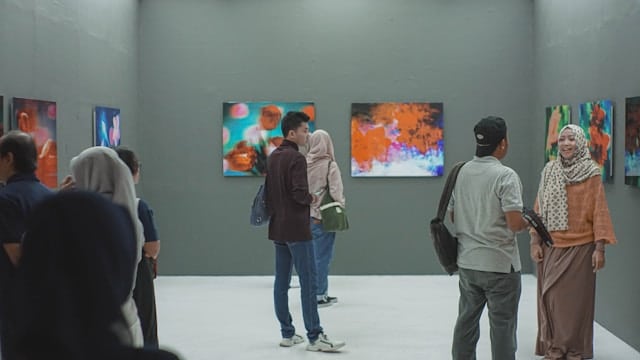How Can Augmented Reality Apps Enhance Museum Experiences in the UK?

From the ancient fossils in Natural History Museum to the masterpieces of Vincent Van Gogh in Tate Britain, museums in the UK offer a treasure trove of knowledge and experiences. However, the traditional means of exhibiting artefacts and art pieces can sometimes limit the depth of understanding and engagement of visitors. In this context, Augmented Reality (AR) Apps are emerging as a groundbreaking tool to enhance museum experiences.
Harnessing Augmented Reality for Immersive Museum Experiences
Augmented Reality overlays digital information onto the real world, bringing static displays to life and providing a more immersive experience. In museums, AR can help visitors to connect more deeply with the exhibits and the history they represent.
En parallèle : What Are Effective Methods for Recycling E-Waste in the UK?
Augmented Reality Apps can offer 3D models, animations, and interactive touchpoints overlaid on the actual museum artefacts. These elements can help recreate historical events, showcase how an artefact was used in its time, or place an art piece in its original context.
For instance, imagine looking at an ancient Egyptian sarcophagus through your AR App. It could bring the hieroglyphics to life, narrating the tale of the person buried within. Simultaneously, it could provide a 3D model of the mummy inside, offering a glimpse into the mummification process. Such experiences can captivate the museum visitors, making the history come alive and facilitating a deeper understanding of the heritage.
A voir aussi : How to open a bank account in Portugal for your Visa?
Augmented Reality and Interactive Learning in Museums
Museums are not just about showcasing artefacts or art pieces; they are also about imparting knowledge. Traditionally, this has been done through explanatory plaques or audio guides. However, Augmented Reality can revolutionise this learning experience, making it more interactive and engaging.
With AR Apps, the learning in museums becomes a two-way process. Visitors can point their devices at an exhibit to get detailed information. They can also interact with the digital overlays, manipulating the 3D models, or participating in virtual quizzes. This type of learning not only makes the museum visit more enjoyable but also aids in better retention of knowledge.
For example, a visitor at the Science Museum could use an AR App to explore the workings of a historical steam engine. They could disassemble the virtual model, understand the function of each part, and then put it back together. Such an engaging learning experience could enhance the visitor's understanding and appreciation of technological advancements.
Enhancing Accessibility in Museums with Augmented Reality
Museums are institutions of public learning and should be accessible to all. Often, people with disabilities face challenges in fully experiencing the exhibits due to physical barriers or information accessibility issues. Augmented Reality can help overcome these barriers and enhance the inclusivity of museums.
AR Apps can provide alternative ways of experiencing the exhibits for those who cannot physically interact with them. For instance, a visually impaired visitor might use an AR App that provides audio descriptions of the artefacts when pointed at them. Similarly, someone who cannot read the explanatory plaques could use the App for audio translations.
Moreover, AR Apps can overcome language barriers, offering translations and interpretations in multiple languages. This can ensure that the rich history and art in UK museums are accessible to a global audience, enhancing the overall visitor experience.
The Future of Augmented Reality in UK's Museums
While Augmented Reality is already enhancing museum experiences, there is still a vast potential for growth. With advancements in AR technology, the line between the real and the digital world is becoming increasingly blurred, paving the way for more immersive and interactive museum experiences.
Future AR Apps could offer personalized museum tours tailored to the visitor's interests. They could also enable social interactions, allowing visitors to share their AR experiences with others in real-time. Additionally, they could create a seamless blend of physical and virtual exhibitions.
Imagine visiting the British Museum and using an AR App to embark on a personalized tour of Ancient Greece. As you walk through the Ancient Greek section, the App brings the statues to life, narrating their tales. Simultaneously, it overlays the ruins of Athens onto the museum floor, allowing you to walk through them virtually. You could then share this experience with your friends, inviting them to join your virtual tour and explore Ancient Greece together.
With such possibilities on the horizon, Augmented Reality holds the key to transforming museum experiences in the UK, making them more immersive, interactive, and accessible. As museums embrace this digital revolution, a visit to the museum could become a journey into a vibrant, augmented reality.
The Impact of Augmented Reality on Visitor Experience and Engagement
In the realm of cultural heritage, augmented reality has proven to be a game-changer in terms of visitor experience. The use of AR Apps in museums allows visitors to move beyond the static exhibit, engage with the artefact in real time, and dive into an immersive experience that brings history to life.
AR Apps enhance visitor engagement by enabling them to interact with the exhibits directly, thereby increasing their involvement and emotional connection. For instance, a visitor in the National Museum might use an AR App to virtually reconstruct a shattered piece of ancient pottery, thereby participating in the restoration process. This real-time interaction not only enhances understanding but also makes the visitor an active participant in the cultural heritage conservation process.
Use of AR in museums also adds a level of gamification, which can significantly enhance the visitor experience. AR Apps can create interactive challenges or quests tied to the exhibits, encouraging visitors to explore the museum more thoroughly. For example, an art gallery could have a virtual treasure hunt, where visitors use AR Apps to find hidden clues within the paintings.
Google Scholar studies have shown that such interactive and immersive experiences in museums lead to better knowledge retention, more positive user experience, and higher visitor return rate. The increased engagement and satisfaction also result in positive word-of-mouth promotion, attracting more visitors to the museum.
The Role of Augmented Reality in the Evolution of UK Museums
The advent of digital technologies such as augmented reality is reshaping the landscape of museums in the UK. As per a study published on preprints.org, an open access platform for scholarly communication, museums are increasingly leveraging AR to enhance their exhibits and visitor experience.
The Natural History Museum, for instance, has incorporated AR into its dinosaur exhibit. Using an AR App, visitors can see these ancient creatures in their natural habitats, observe their behaviours, and even interact with them. This creates a mixed reality experience, where the physical and the digital worlds intertwine, providing a deeply immersive experience.
Moreover, AR is playing a pivotal role in the preservation of cultural heritage. Through AR Apps, museums can digitally archive their exhibits, ensuring that our cultural heritage is preserved and accessible for future generations. For instance, the British Museum has digitized its Rosetta Stone exhibit, allowing visitors to explore the artefact in detail through an AR App.
Conclusion
Augmented reality, with its ability to create immersive experiences, is revolutionizing museum experiences in the UK. It not only enhances visitor engagement and understanding but also democratizes the access to cultural heritage by overcoming physical, linguistic, and accessibility barriers. As we move towards a more digital future, it is likely that AR will play an even larger role in shaping museum experiences.
The potential of AR extends beyond the current applications. With advancements in immersive technologies and mixed reality, we can envision a future where a visit to the museum Singapore or the National Museum transcends geographical boundaries, where visitors can embark on a real-time virtual tour from anywhere in the world. In such a future, Augmented Reality won't just enhance museum experiences; it will define them.
